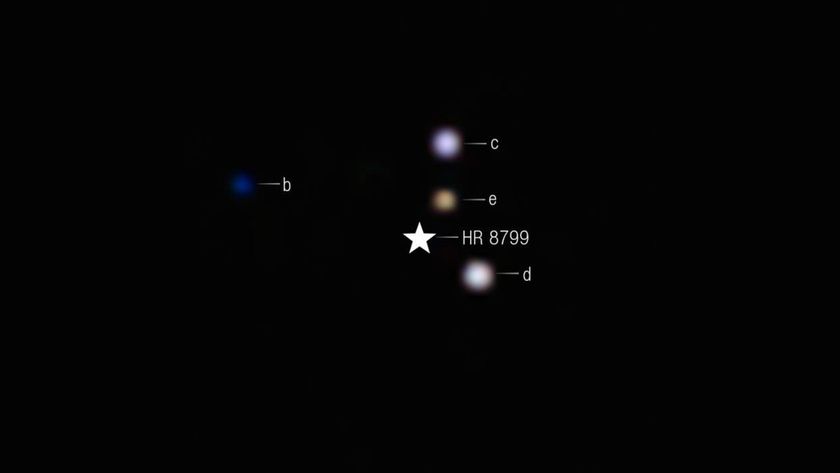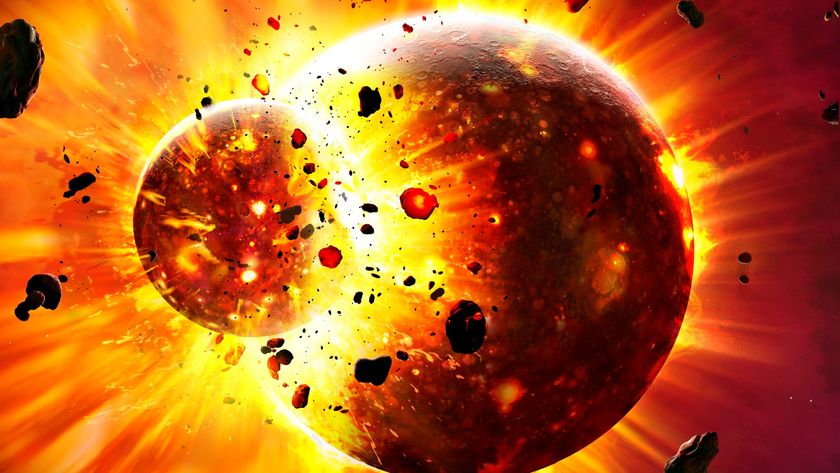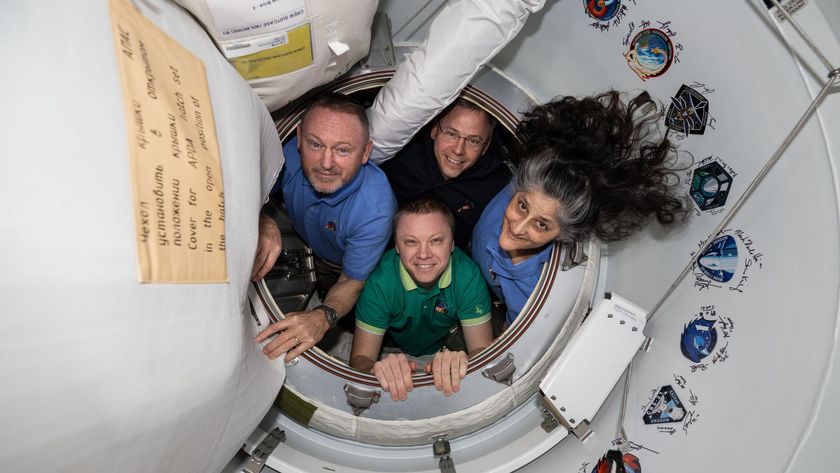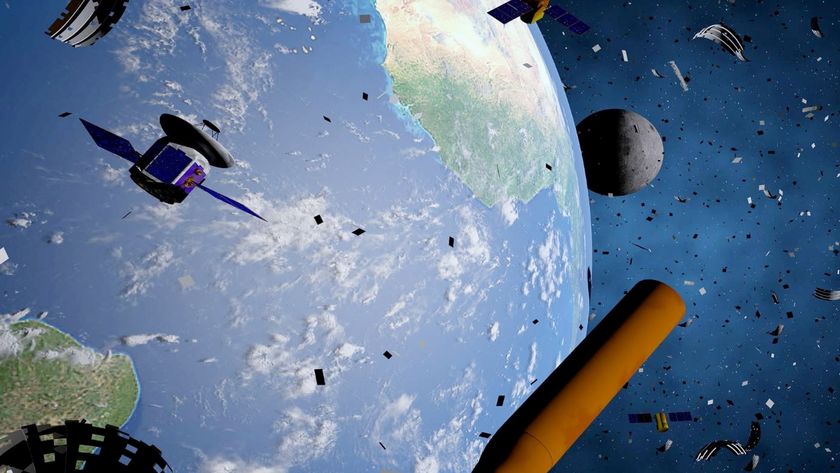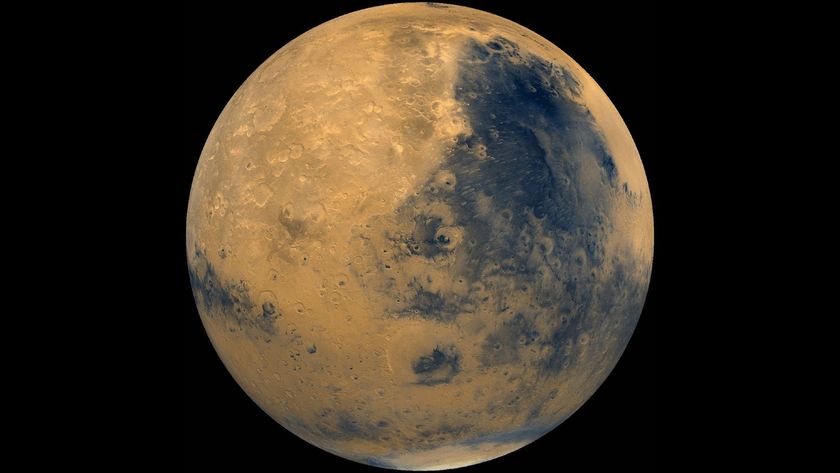Nebula's Crimson Heart Revealed in Breathtaking Images, Video
Bright red veins lace the sky and feed into enormous crimson clouds that look like living hearts, in this breathtaking view of the Gamma Cygni nebula and its surrounding region as seen by veteran astrophotographer Terry Hancock.
In the night sky, this nebula lies in the constellation Cygnus, and is named after the supergiant star at its center, Gamma Cygnus, also known as Sadr (pronounced like sadder). Hancock created a stunning video tour of the Gamma Cygni region with his latest images, which he shared with Space.com.
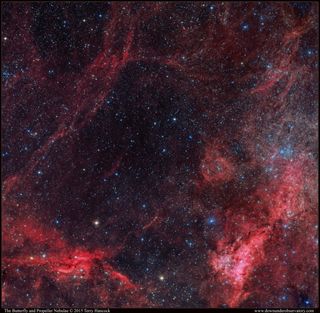
Hancock has imaged the Gamma Cygni region before, but his newest panoramic view is a cut above. The full mosaic consists of 187 frames and required more than 18 hours of observation time from his DownUnder Observatory to complete. You can see more of Hancock's latest Gamma Cygni views in this image gallery on Space.com.
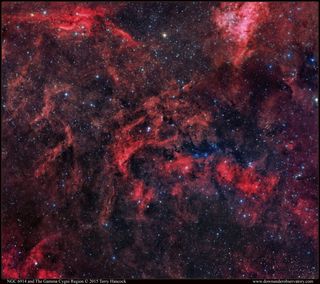
The star Gamma Cygnus lies at the center of the Northern Cross, which is a smaller arrangement of stars in the constellation Cygnus. Hancock's image covers an area of approximately 6.5 x 5.4 degrees. The region includes multiple stars, dust clouds, dust lanes (the dark canyons between clouds) and nebulae (particularly rich clouds that may form stars), some of which are identified by Hancock in a series of annotated images in the Space.com gallery mentioned above.
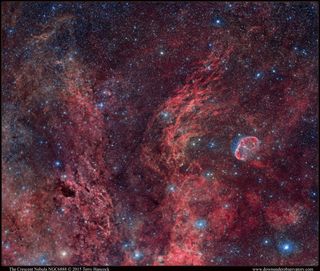
Particularly vivid in the image is the Crescent Nebula, which lies about 5,000 light-years away from Earth. The nebula consists of material that once belonged to the Wolf-Rayet star, WR 136, which may explode into a supernova in the next million years. Stellar winds collided with the star while it was puffed up as a red giant, creating the outer shell of material.
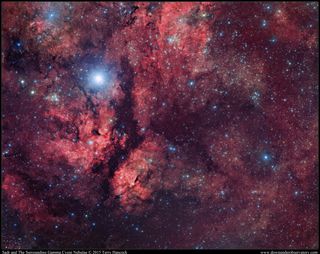
Hancock's incredible night sky and astronomy images have been featured on Space.com many times before. You can see more of Terry Hancock's work on his Flickr page and at his website: http://www.downunderobservatory.com/.
To see more amazing night sky photos submitted by Space.com readers, visit our astrophotography archive.
Get the Space.com Newsletter
Breaking space news, the latest updates on rocket launches, skywatching events and more!
Editor's note: If you have an amazing skywatching photo you'd like to share for a possible story or image gallery, send images and comments in to Space.com at spacephotos@space.com.
Follow Calla Cofield @callacofield. Follow us @Spacedotcom, Facebook and Google+. Original article on Space.com.
Join our Space Forums to keep talking space on the latest missions, night sky and more! And if you have a news tip, correction or comment, let us know at: community@space.com.

Calla Cofield joined Space.com's crew in October 2014. She enjoys writing about black holes, exploding stars, ripples in space-time, science in comic books, and all the mysteries of the cosmos. Prior to joining Space.com Calla worked as a freelance writer, with her work appearing in APS News, Symmetry magazine, Scientific American, Nature News, Physics World, and others. From 2010 to 2014 she was a producer for The Physics Central Podcast. Previously, Calla worked at the American Museum of Natural History in New York City (hands down the best office building ever) and SLAC National Accelerator Laboratory in California. Calla studied physics at the University of Massachusetts, Amherst and is originally from Sandy, Utah. In 2018, Calla left Space.com to join NASA's Jet Propulsion Laboratory media team where she oversees astronomy, physics, exoplanets and the Cold Atom Lab mission. She has been underground at three of the largest particle accelerators in the world and would really like to know what the heck dark matter is. Contact Calla via: E-Mail – Twitter



